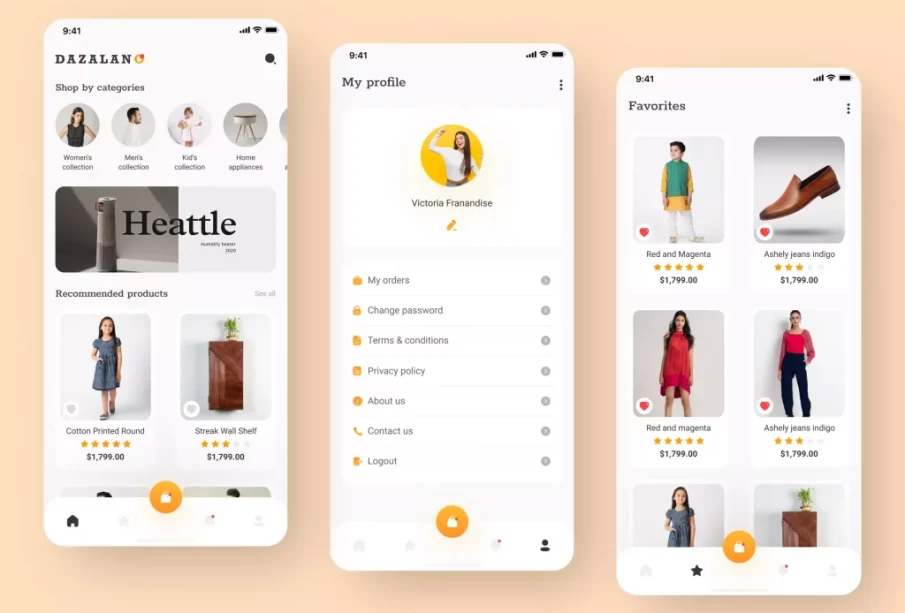What Experts Say About Online Store UX to Avoid

In today’s digital-first marketplace, the user experience (UX) of an online store can make or break a business. While a visually appealing website and a broad product range are important, it’s the ease with which users can navigate and make purchases that truly drives success. Experts in the e-commerce and UX design fields agree: a seamless, intuitive shopping experience is non-negotiable. Yet, many online stores inadvertently introduce barriers to this experience, resulting in frustrated users, abandoned carts, and ultimately, lost sales.
In this article, we’ll explore what UX experts recommend businesses avoid when designing or optimizing their online stores. By understanding these common pitfalls, you can take proactive steps to ensure that your store is not only attractive but also functional and efficient in converting visitors into loyal customers.
1. Cluttered Layouts and Overwhelming Design
In an effort to showcase as many products as possible or push promotions, many online stores fall victim to cluttered layouts. According to UX specialists, overloading a website with too many elements—text, images, pop-ups, and ads—can overwhelm customers and lead to confusion. When users are faced with a crowded page, they tend to feel anxious or distracted, which can cause them to abandon the site altogether.
Experts emphasize the importance of a clean, minimalist design. Simplicity is key. A straightforward layout allows users to focus on the most important elements: your products, calls to action (CTAs), and navigation. This means using negative space strategically, decluttering unnecessary content, and ensuring that the design reflects the brand’s identity without overwhelming the visitor.
“A user-centric design focuses on guiding the visitor’s attention where you want it—without forcing it,” says usability expert Jakob Nielsen, co-founder of the Nielsen Norman Group. “Visitors should instantly understand what the site is about and how to navigate it without feeling lost.”
2. Slow Load Times
Another common mistake that experts caution against is slow website load times. With attention spans shrinking and impatience growing, studies show that users will abandon a site if it takes longer than three seconds to load. Research conducted by Google found that a one-second delay in load time can result in a 7% reduction in conversions, a staggering figure for any e-commerce business.
Page speed is not just a convenience for customers; it’s a critical factor for SEO as well. Google has explicitly stated that it uses page speed as a ranking factor for search results. A slow website can harm your visibility, reduce traffic, and ultimately affect your bottom line.
To optimize load times, experts recommend compressing images, minimizing the use of heavy JavaScript, and utilizing content delivery networks (CDNs). Regularly testing the speed of your website using tools like Google PageSpeed Insights or GTmetrix can help identify and fix any bottlenecks that might be slowing your store down.
3. Complex Checkout Processes
While most online store owners understand the importance of an easy checkout experience, many still make the mistake of complicating the process. Experts agree that an overly complex checkout with too many steps, form fields, or required account sign-ups is one of the primary reasons for cart abandonment.
A recent report by Baymard Institute revealed that 69.8% of online shopping carts are abandoned before a purchase is made, and one of the key contributors to this is a confusing or lengthy checkout process. Users don’t want to feel like they’re jumping through hoops just to complete a transaction, especially if they’re in a hurry or unsure about their purchase.
Simplify the checkout experience by minimizing the number of steps required. Make sure customers can complete their orders as quickly and seamlessly as possible. This includes offering guest checkout options, autofill capabilities for returning customers, and providing multiple payment methods like credit cards, PayPal, Apple Pay, and even newer options like cryptocurrency, if applicable.
Additionally, experts recommend providing clear progress indicators during the checkout process, showing customers exactly how many steps are left and what information they still need to provide.
4. Lack of Mobile Optimization
With mobile commerce accounting for over 50% of all e-commerce sales, neglecting mobile optimization is a cardinal sin in the world of online stores. A mobile-responsive design ensures that users can easily navigate your site, regardless of the device they’re using. Unfortunately, many e-commerce sites still fail to optimize for mobile or have clunky mobile experiences.
Experts stress the importance of a responsive design that automatically adjusts the layout and functionality based on the size of the screen. Elements like menus, product images, buttons, and checkout forms must be easy to interact with on smaller screens. Buttons should be large enough for tap navigation, and product details should load quickly without excessive zooming or scrolling.
The use of mobile-friendly payment options such as Apple Pay and Google Pay can also enhance the mobile shopping experience. For instance, instead of requiring customers to input their credit card details manually, one-click payment methods make it faster and more convenient for users to complete a purchase.
“Mobile optimization isn’t just about resizing images—it’s about creating an experience that feels intuitive and fast on every device,” says Sarah Doody, a UX designer and e-learning expert.
5. Confusing Navigation
Navigation is the backbone of any online store. If users can’t easily find what they’re looking for, they’ll likely leave in frustration. However, many online stores use complex, multi-layered menus or ineffective search features that make it difficult for customers to locate products.
Experts recommend keeping your navigation structure as simple and intuitive as possible. Categories should be clearly defined and easy to access from the homepage. Use breadcrumb navigation to help users track where they are in your store, especially if they’ve navigated through several pages of products. Additionally, implementing a search bar with filters and suggestions can help users quickly narrow down their options and find exactly what they’re looking for.
Avoid overwhelming customers with too many options in the navigation menu. Research from Nielsen Norman Group suggests that limiting choices can actually improve the user experience, as it reduces decision fatigue and guides customers more easily to their desired products.
6. Missing Product Information and Low-Quality Images
One of the most crucial aspects of the online shopping experience is product presentation. Customers can’t physically touch or try products in an online store, so high-quality images and detailed descriptions are vital. Unfortunately, many stores fail to provide sufficient or accurate information about the products they sell.
Experts recommend offering high-resolution product images that showcase the item from multiple angles. Include zoom functionality so users can examine details up close. In addition to visual representation, make sure each product page provides clear, concise descriptions and specifications, including sizes, colors, materials, and care instructions.
Additionally, product reviews play a significant role in influencing purchase decisions. According to a study by BrightLocal, 79% of consumers trust online reviews as much as personal recommendations. Including user-generated reviews and ratings on your product pages can help build trust and encourage conversions.
7. Poor Communication of Shipping and Return Policies
Unclear or hidden shipping and return policies are a major deterrent for online shoppers. If customers don’t understand your shipping rates, delivery times, or return process upfront, they may abandon their carts out of uncertainty or frustration.
Experts suggest placing shipping information in a prominent location, such as the header or footer of your website, and including estimated delivery times on product pages. Additionally, make your return policy transparent, easy to understand, and accessible. Offering free returns or free shipping thresholds can significantly enhance the user experience and increase conversions.
Conclusion: Enhancing UX for Lasting Success
The online shopping experience is about much more than a well-designed homepage or attractive product listings. According to UX experts, your online store’s success hinges on providing a seamless, fast, and intuitive user experience across every touchpoint of the customer journey. By avoiding common mistakes such as cluttered designs, slow load times, and confusing navigation, you can create a shopping environment that builds trust, encourages purchases, and fosters long-term customer loyalty.
Ultimately, the goal is to make the shopping experience as easy and enjoyable as possible, so customers will not only return but also recommend your store to others. By staying focused on the principles of user-centric design, you can ensure that your online store stands out in a competitive marketplace and delivers measurable results.







